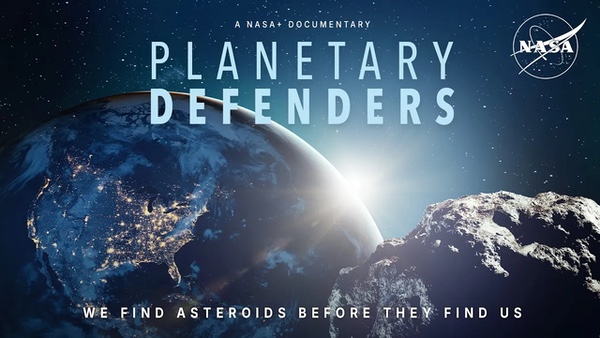Review: Planetary Defendersby Jeff Foust
|
| “I really like that I’m protecting the planet,” said one astronomer who works to follow up observations of new asteroids to refine their orbits, hastily adding, “I’m not the one with the cape pushing the asteroid away.” |
The 75-minute documentary is, as the name suggests, an overview of planetary defense, examining the efforts to discover, track, and characterize near Earth asteroids and develop ways to prevent any future impacts. The film takes the viewer on a whirlwind tour, such as an Arizona observatory that searches for asteroids (“If you guys were going to be here for a discovery,” a grinning astronomer there says to the film crew, discussing one asteroid that observatory has just found, “a PHA [potentially hazardous asteroid] is definitely what you want.”) Other observatories and labs are also featured, as well as the clean room where NASA’s Double Asteroid Redirection Test (DART) spacecraft was built and, not surprisingly, NASA Headquarters.
The topic of planetary defense is familiar to readers here, who probably won’t learn that much about those efforts here. The documentary, though, does a good job putting faces to that work, including those at NASA and elsewhere involved in planetary defense who describe pride in being involved in research that has life-saving, even civilization-saving, applications. “I really like that I’m protecting the planet,” said one astronomer who works to follow up observations of new asteroids to refine their orbits, hastily adding, “I’m not the one with the cape pushing the asteroid away.”
Even for those who are familiar to some degree with NASA’s planetary defense program, there are some nuggets in the documentary. Near the end, it goes inside one of the tabletop exercises that brings together NASA and other government agencies, as well as international partners, where they go through scenarios of potential impacts to see how they would react and work with one another, exercises that have traditionally been held behind closed doors with only reports about them afterwards. (Evidently concerned that the scenes would be taken out of context, the film includes the disclaimer “THIS IS JUST AN EXERCISE” at the bottom of the screen for several minutes while participants discuss the hypothetical impact scenario.)
Such a film could easily be taken as an advertorial for NASA’s planetary defense program or even a plea for more money, but the filmmakers walk a fine line to avoid doing so; there is no discussion, for example, of budgets for planetary defense beyond a passing reference from someone working on DART who said she never imagined she would take “a couple hundred million dollar spacecraft and crash it into an asteroid.” A documentary made outside the agency might have examined that point, including whether NASA is spending enough or too much on planetary defense, in more detail.
The result is a film that, if you found on Netflix or Hulu or some other commercial service, you would consider just a typical documentary, not something produced by NASA. Except, of course, that you won’t find Planetary Defenders on those services but instead have to go to NASA+ (although it is also on YouTube to help in its discoverability.) And like those who once checked the NASA TV schedule, if you’re using NASA+ you are probably already predisposed to content like this film, which leads one to wonder just how effective it will be in telling the story of planetary defense.
Note: we are now moderating comments. There will be a delay in posting comments and no guarantee that all submitted comments will be posted.
